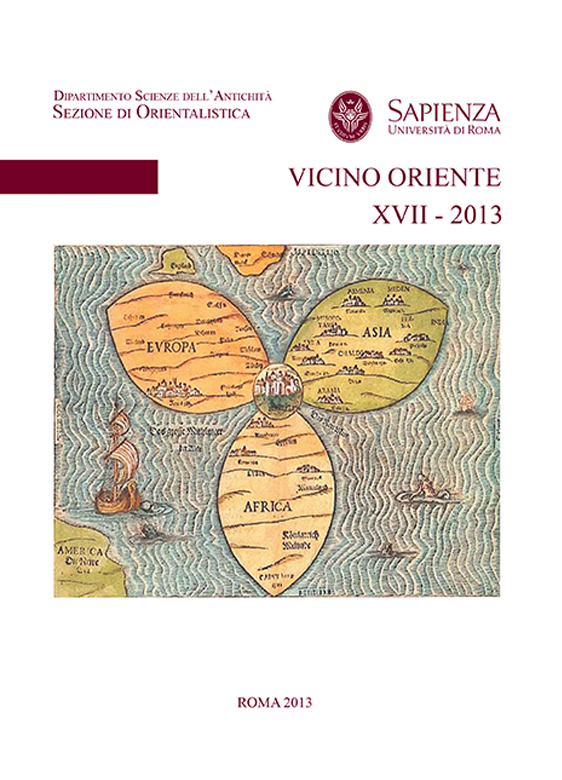Abstract
During the seasons of excavation 2010-2011 carried out by «La Sapienza» Expedition to Motya,
several pits were identified near the southern corner of the Kothon. Two of them have been used for
cult activities during the 5th century BC, as attested to by botanical and faunal samples, votive
offerings and sacred tools found inside them. Such evidence suggests that a chthonic cult devoted to a
divine couple connected to underground water, to the fertility and to the cycles of nature was
performed in the sacred area of the Kothon (Nigro 2012a). The main god has been identified with
Baal ‘Addir (Poseidon) and his companion can be now identified with Demetra, assimilated to the
Phoenician goddess Astarte.

Questo lavoro è fornito con la licenza Creative Commons Attribuzione - Non commerciale - Non opere derivate 4.0 Internazionale.
Copyright (c) 2023 VICINO ORIENTE

